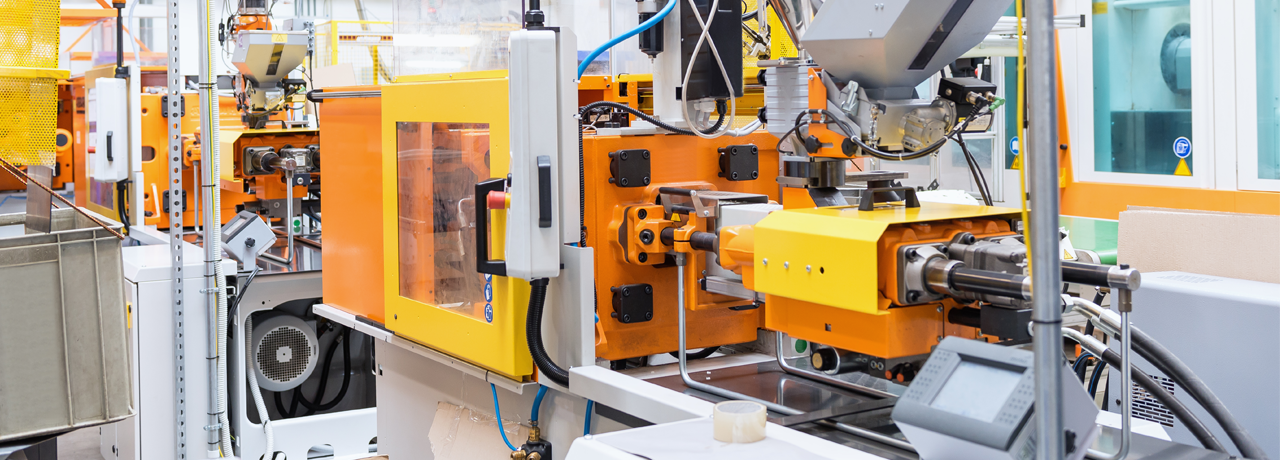
Remy Marcotorchino
Director of Marketing, Industrial & Infrastructure

Original Equipment Manufacturers (OEMs) of compressors, pumps, chillers and other industrial equipment have faced several challenges as they seek to adapt themselves and their products to today’s digital economy. For example, while they typically offer some maintenance or other services, once they sell a product, they usually don’t learn about a problem with it until it isn’t working properly. Then there’s a frustrated customer and a rush to fix it – often at a much higher cost than if the OEM had been able to prevent the problem in the first place. In addition, building customer loyalty and establishing strong relationships is a challenge, as their contact with the customer after the original purchase is limited. Once they sell the customer equipment, it is also difficult for the OEM to collect and analyze data from this equipment for actionable insights they can use to improve their equipment.
However, the Industrial IoT (IIoT) can help industrial OEMs address these challenges, with IIoT applications that use sensors to collect information on their equipment’s condition and operations, including not just how much the equipment is used, but if there are any internal and external temperature variations, corrosion on a valve, abnormal pump performance or any changes in the speed of a rotor. With these IIoT applications, industrial OEMs can secure actionable insights that enable them to transform their businesses by:
• Improving engagement with customers by providing them with valuable information on their equipment, such as when new supplies are required, increasing customer satisfaction. For example, commercial laundry machine manufacturer Girbau provides a remote monitoring service for their machines.
• Introducing predictive maintenance services that prevent or reduce equipment downtime, eliminate unnecessary maintenance and streamline the ordering of replacement parts. Atlas Copco, a provider of sustainable productivity solutions, collects machine data to help service teams deliver the right spare part at the right time for faster fault resolution.
• Collecting real-time information on equipment operations to fuel data-driven equipment innovations and improvements.
• Moving from selling equipment to equipment-as-a-service business models that allow their customers to reduce upfront and CapEx costs, create new long-term service revenue streams and increase customer loyalty.
While industrial OEMs have been trying for several years to develop and deploy IIoT applications to achieve these benefits, many have been daunted by the complexity involved in building and rolling out these applications – complexity that slows time to market, lowers ROI and can even lead to IIoT application project abandonment. Examples of this complexity include the need for extensive expertise in a variety of areas, including IoT devices, embedded software, cellular connectivity and cloud services, as well as knowledge of how to integrate all these technology components together in a seamless and secure way that can be scaled globally. They are also faced with challenges that include how to:
• Connect to equipment assets using old, legacy-based communications standards
• Update or reconfigure software on devices in the field with new IIoT application features or capabilities
• Ensure end-to-end security of the data from its generation at the device, through its wireless transmission to the cloud and back.
• Integrate data from IIoT applications into ERP, CRM and other cloud applications and services
Until recently, there have been few device-to-cloud (D2C) solutions available that truly help industrial OEMs cut through all this complexity. “IoT Cloud Platforms” on the market today do offer a limited ability to get device data to the cloud – but that’s all they do. They do not help with designing, managing and securing end-to-end integration between the cloud platform, cellular network and third-party endpoint devices. Other off-the-shelf solutions built for specific applications and industries can satisfy a specific IIoT requirement for getting data from devices to the cloud, but they lock industrial OEMs into a single vendor and use case. These solutions make it difficult to add new types of equipment, with different interfaces or types of data, or to enhance the IIoT application with new functionality, with dead-ends that hinder expansion or improvements to the application.
However, a new type of D2C platform, currently offered in preview by Sierra Wireless, provides industrial OEMs the opportunity to cut through the complexity that has hindered their IIoT efforts. The new secure, scalable distributed data orchestration platform, OctaveTM, is designed to dramatically simplify the development and management of IIoT applications.
Octave is unique in that it is a complete end-to-end IoT platform that uses data orchestration technology to tightly integrate deep edge device connectivity with global cellular connectivity and cloud service APIs. Octave enables industrial OEMs to quickly build and deploy IIoT applications and then securely extract, orchestrate and act on IIoT application data. For example, with Octave, industrial OEMs can build IIoT applications that can:
• Collect data from a wide variety of equipment using different modern and legacy communication protocols, including Modbus, CAN Bus and Bacnet.
• Monitor, control, update and maintain IIoT application-connected equipment through cloud-based management consoles
• Create and change IIoT application data collection rules, allowing them to buffer, filter, correlate, store and forward data from their equipment in ways that both minimize data transmission costs and ensure that the right data is sent to the right systems of record at the right time.
• Integrate IIoT application data seamlessly into other applications and cloud services
• Be easily updated with patches to address new security threats, while data from devices is protected from its generation through its transmission to the cloud and back through an infrastructure that tightly integrates device, network and cloud security.
These capabilities provide critical benefits to industrial OEMs looking to build and deploy IIoT applications. For example, they can develop IIoT applications without becoming an expert in any of the key areas of complexity – embedded devices, edge communications, cellular connectivity or IoT data management and security – allowing them to focus on building applications, not infrastructure. In addition, by eliminating the need to develop or hire the expertise required to build out IoT infrastructure, Octave enables developers to create proof of concepts (POC) in a matter of weeks, not months or years. Moreover, because the POC is developed on pre-built, scalable infrastructure, once the POC is validated, the application can easily be scaled into production without starting from scratch.
Another advantage of Octave is that web app developers can build their applications using the software environments and tools they already know. This means developing for the IIoT is no longer a special use case, requiring entirely different tools and skill sets from the rest of the software development environment. Developers can now build, deploy and refine IoT applications as easily as any other business application: one platform for IT and OT.
Finally, Octave allows for predictable business models and removes the guess work of how much data an IoT application will use. With a per message or data points business model, OEMs can have a clear grasp on their ROI from day one and scale accordingly.
Until recently, the time, cost and expertise needed to deploy IIoT solutions that increase customer engagement and enable service-centric business models prevented industrial OEMs from implementing these solutions. With Octave, Sierra Wireless highlights how a distributed data orchestration platform can remove these obstacles. By simplifying IIoT application development and management, Octave will allow these industrial OEMS to quickly bring to market and globally scale new IIoT applications. With new IIoT applications that allow them to collect and use equipment data to reduce equipment downtime, secure insights on how to improve their equipment and offer new equipment-as-a-service and other services that provide additional value to their customers and create new revenue streams, industrial OEMs can finally use the IIoT to transform their businesses.
Industrial OEMs can Start with Sierra to learn more about how Sierra’s Octave D2C data orchestration platform can help you reimagine your future with IIoT applications and accelerate the time to market for making that future a reality.
Get innovation delivered to your inbox. Sign up for our blog and stay on top of the very latest from Semtech (formerly Sierra Wireless).
© 2024 ALL RIGHTS RESERVED